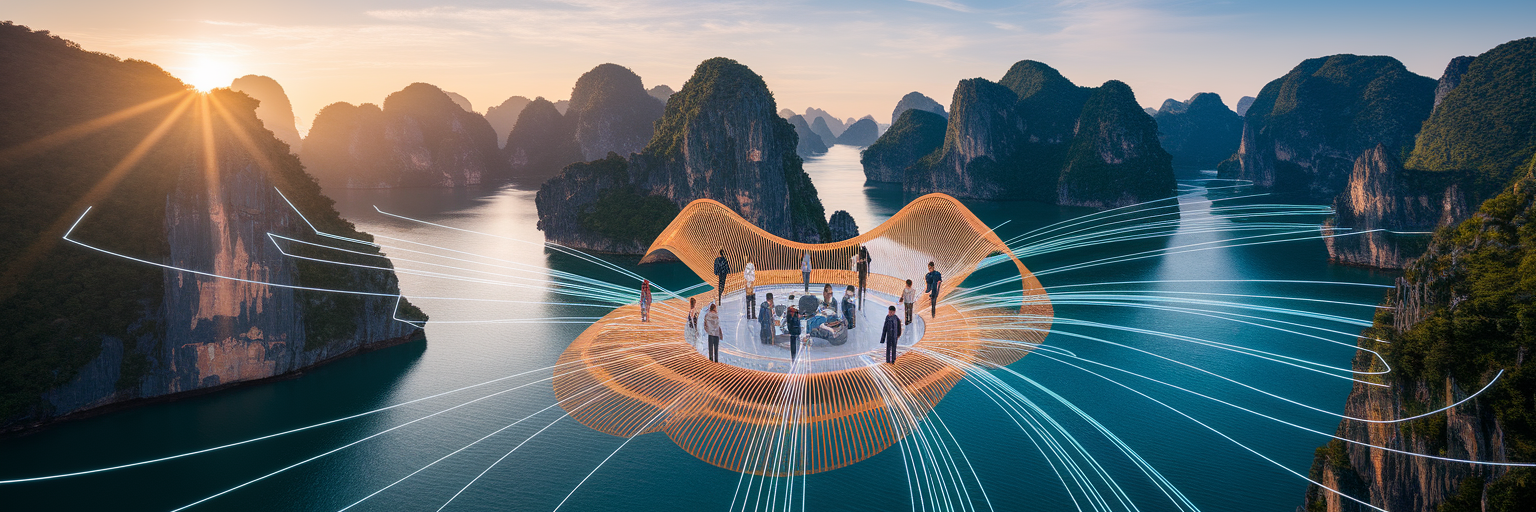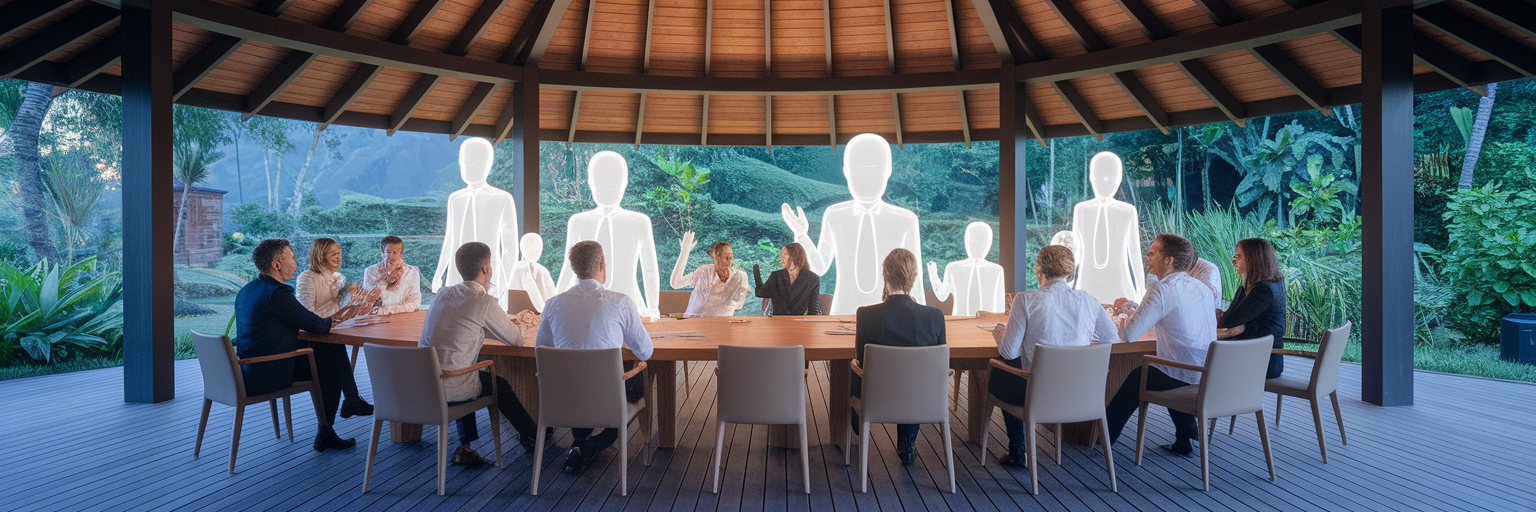Designing Green Metaverse Journeys for APAC Incentive Travel
Learn to design environmentally responsible virtual experiences that enhance physical incentive trips to destinations like Thailand and beyond.

Learn to design environmentally responsible virtual experiences that enhance physical incentive trips to destinations like Thailand and beyond.

The era of corporate rewards defined solely by luxury is evolving. Top talent today seeks purpose and connection, transforming incentive travel from a simple perk into a meaningful experience. This is where the metaverse enters, not as a replacement for physical travel, but as a powerful amplifier for incentive programs across the APAC region. It can build a palpable sense of anticipation before a trip, create a shared community among participants scattered across the globe, and extend the positive impact long after everyone has returned home.
We all know the feeling of pre-trip excitement. A virtual world can channel that energy, offering a taste of the destination and connecting team members before they ever meet in person. This shift addresses a growing demand for more innovative and emotionally resonant rewards that go beyond the conventional. As companies explore these richer digital worlds, a critical question arises: what is the environmental footprint of these experiences? For purpose-driven organisations planning their next incentive program, this sustainability challenge is not an afterthought but a central concern. This is where our expertise in crafting modern event solutions becomes essential.

It’s easy to assume that virtual events are inherently green. While they reduce travel, the digital worlds themselves have an environmental cost. The immersive corporate metaverse experiences that captivate and engage teams are powered by vast data centers, which are some of the most energy-intensive facilities on the planet. Every stunning graphic rendered and every seamless interaction between hundreds of users requires immense computing power, often drawn from grids reliant on fossil fuels.
This creates a digital carbon footprint. Think of it like an invisible energy meter running in the background of every virtual meeting or digital exploration. Each click, avatar movement, and video stream contributes to real-world emissions. This presents a paradox for conscientious companies: the very tool used to lower travel-related carbon can create a significant environmental burden of its own. Acknowledging this impact is the first step toward designing truly sustainable metaverse events that align with corporate responsibility goals.
Addressing the digital carbon footprint requires a deliberate focus on low-carbon infrastructure. This approach is built on two core pillars: powering virtual worlds with renewable energy and optimising their architecture for maximum efficiency. It’s not just about what users see on screen, but about the invisible framework that supports the entire experience.
The foundation of a sustainable virtual event is the data center that hosts it. A new generation of green data centers for events is emerging across the APAC region, designed from the ground up for sustainability. These facilities integrate directly with renewable energy sources like solar and wind. They also employ advanced cooling technologies, such as liquid cooling or systems that use natural airflow, which dramatically reduce the energy consumption associated with traditional air conditioning. Choosing a partner that utilises this infrastructure is a critical first step.
Beyond the hardware, the software itself plays a huge role. Efficient coding and lean platform design can significantly lower energy demands without compromising the user experience. As a recent report from The Shift Project highlights, the design of a virtual world directly correlates with its energy consumption. Modern platforms use AI-driven resource management to allocate computing power intelligently, ensuring that energy is only used when and where it is needed. This balanced approach prioritizes both performance and efficiency.
When planning your next virtual event, have you considered asking your provider about their infrastructure? To ensure you are making a genuinely sustainable choice, here are a few questions to ask:
Asking these questions helps you identify partners who understand these complexities. If you're ready to explore these solutions, we're here to work with you.
| Factor | Conventional Approach | Low-Carbon Approach |
|---|---|---|
| Data Center Power | Grid electricity (often fossil fuels) | Directly powered by solar, wind, or other renewables |
| Platform Architecture | Standard code, high resource usage | Optimized algorithms and AI-driven resource management |
| Cooling Systems | Energy-intensive air conditioning | Liquid cooling, natural airflow design, or geothermal systems |
| Performance Metrics | Focus on speed and graphics alone | Balanced focus on performance and energy efficiency (watts per user) |
This table outlines the key differences between standard and green infrastructure for virtual events. The choices made in these areas directly determine the event's digital carbon footprint.

The true power of the metaverse lies in its ability to augment, not replace, physical experiences. A hybrid model creates a continuous journey that deepens engagement and extends the value of an incentive trip. Consider an incentive program in Thailand, a destination where our team in Bangkok excels at creating authentic local connections. A virtual layer can enrich this experience from start to finish, making it one of the most effective hybrid incentive programs Asia has to offer.
Weeks before departure, participants can enter a stylized virtual replica of their destination. Imagine your team exploring a digital version of Thai temples or navigating a virtual floating market, all while learning about the local culture and itinerary. This "digital teaser" for an incentive travel metaverse Thailand experience builds a strong sense of community and anticipation, turning the pre-trip phase into an engaging part of the reward itself.
We’ve all been in situations where a key team member cannot travel due to personal or logistical reasons. A hybrid model ensures they are not left out. While the main group enjoys a gala dinner in Bangkok, remote participants can join a virtual table, interact with colleagues, and watch live-streamed speeches. They could even participate in a virtual Thai cooking class led by a real chef on-site, receiving a local ingredient kit at home. This approach fosters genuine unity and demonstrates a commitment to inclusivity, which is crucial for creating the powerful connections we explore in our insights on digital engagement.
The journey doesn't end when the plane lands back home. The virtual space can transform into a dynamic hub for shared memories. A gallery of photos and videos from the trip, leaderboards from team activities, and forums for continued discussion can keep the positive momentum going for months. This extends the return on investment far beyond the trip itself, solidifying the bonds and motivation that the program was designed to build.
For a sustainability initiative to be credible, it must be measurable. A well-executed program of low-carbon virtual events APAC provides a powerful story of corporate responsibility, but that story needs to be backed by data. Measuring the carbon footprint of your hybrid event, from data center energy use to participant devices, is the first step toward genuine accountability.
Once the emissions are calculated, the unavoidable impact can be addressed through credible carbon offsetting. This involves investing in verified environmental projects, such as reforestation in Southeast Asia or renewable energy development. It is essential to partner with platforms that adhere to rigorous standards, like those provided by verification bodies such as Verra, to ensure the offsets are real and impactful. This commitment to sustainability is a core part of who we are, as reflected in our purpose-driven approach.
Communicating this journey transparently completes the cycle. We believe in a clear, three-step process:
Ultimately, a green metaverse journey is not about compromise. It is about designing smarter, more meaningful experiences that deliver on both purpose and performance, enhancing your brand's reputation and deepening trust with employees and customers alike.